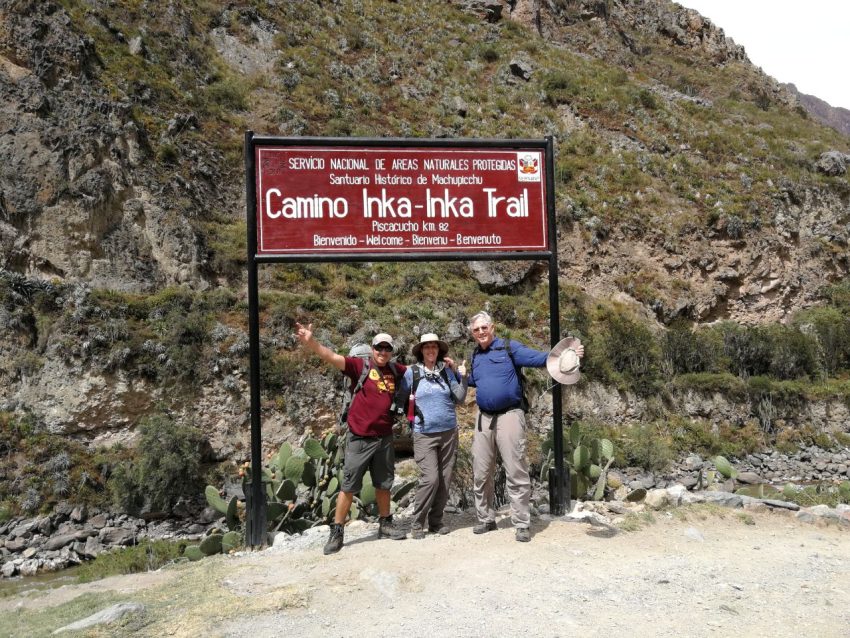The Salkantay Trek is much more than just another route to Machu Picchu. It is a special experience that will take you away from the crowds and into the heart of the adventure. The Salkantay is a great alternative to the Inca Trail. It is not as crowded, so you can enjoy the path through lonely valleys, mountain passes, and cloud forests. This is the perfect place to seek adventure! On this trail, you will be able to explore and experience unspoiled nature.
At iteptravel.com, we are here to make sure you get the most out of your Salkantay Trek. Our team is ready with all the knowledge, advice, and practical help you could ever need to make your adventure unforgettable. From your preparation to the final stretch to Machu Picchu, we will make sure your trip offers you not only everything you expect, but perhaps even more!
What and where is the Salkantay Trek?
The Salkantay Trail is a historic route in the Peruvian Andes that leads to Machu Picchu. Named after Mount Salkantay, this trek takes you through high mountain passes, glacial lakes, and cloud forests, showcasing the diverse landscapes of the Andes.
Starting near Mollepata, about three hours from Cusco, the trail passes key points such as Soraypampa and ascends to the Salkantay Pass at 4,600 meters. From there, it descends into the lush areas of the Sacred Valley, ending at Machu Picchu. The hike is challenging but offers a rewarding mix of nature, Andean culture and history.
How can we organize your Salkantay Trek?
At iteptravel.com, we take care of every detail of your Salkantay Trek from start to finish. Our local guides are experts in the region, making each day on the trail entertaining and informative. We take care of your permits for Machu Picchu, arrange transportation from your hotel to the trailhead, and ensure a smooth return to Cusco. Our fairly paid and well-equipped porters carry your gear so you can walk freely. Our chefs prepare fresh, local meals every day. With us, you can focus on enjoying the trek—we’ll take care of the rest.
The best of Salkantay Trekking
The Salkantay Trek is full of adventure and unforgettable stops that give each day that extra touch. The route takes you through diverse landscapes and passes by places that make the history of the Andes come alive. Some examples include:
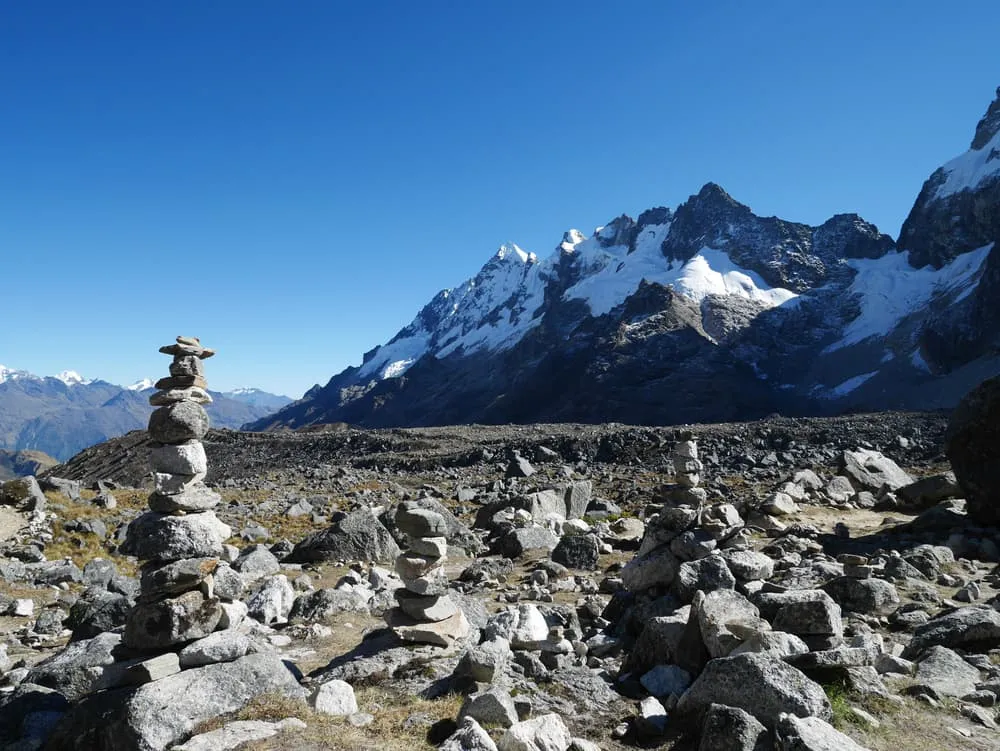
Salkantay Pass
At 4,630 meters (15,190 feet), this high mountain pass is the most challenging point of the trek. Surrounded by snow-capped peaks, the views of Mount Salkantay offer a true sense of accomplishment. Reaching this point is a testament to endurance and spirit.
Humantay Lake
This beautiful lake, situated in the Andes, is reached with a short detour on the first day of the trek. Its waters and colors make it a serene stop for photos and reflection, and it is a favorite spot for hikers looking for a moment of tranquility.
Cloud Forest
After Salkantay Pass, the trail descends into cloud forests filled with tropical plants and waterfalls. This change in landscape offers a nice contrast, showcasing the biodiversity of the Andes and providing a different backdrop for the hike.
How do I get a permit for the Salkantay Trek?
Unlike the Inca Trail, the Salkantay route does not require a permit. However, all Salkantay treks include a visit to Machu Picchu, for which a permit is required. These often sell out quickly, so we check availability in advance as part of your booking confirmation process to ensure everything is in order for your trip.
As a less-traveled route, the Salkantay Trek offers hikers more flexibility. However, we recommend booking well in advance to ensure a smooth experience, especially if you plan to go during peak season (May through September). To ensure you have all the necessary permits for Machu Picchu, we make all the arrangements for you. We take care of the details so you can focus on enjoying these iconic experiences without any additional hassle.
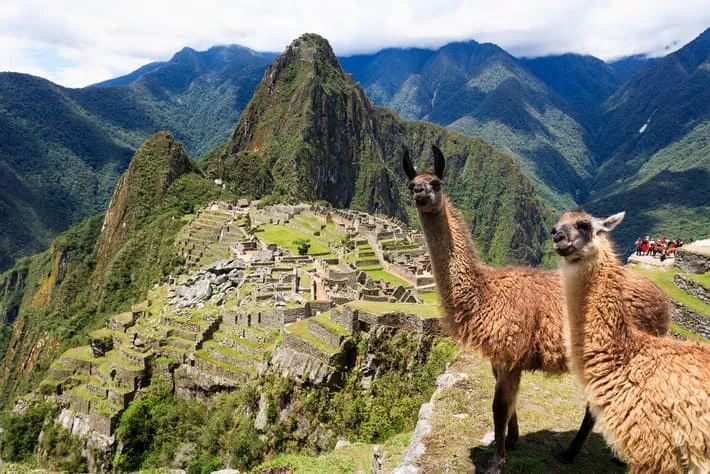
Does the Salkantay Trek include Machu Picchu?
Yes, the Salkantay Trek includes Machu Picchu! When you book a guided Salkantay Trek, the permit and entrance fee for Machu Picchu are usually included in your package. This means that after several days of hiking through stunning landscapes, you will end your adventure with a guided tour of Machu Picchu. Experienced guides will lead you through the ancient citadel, sharing with you details about its history, architecture, and the mysteries that make it one of the most iconic archaeological sites in the world.
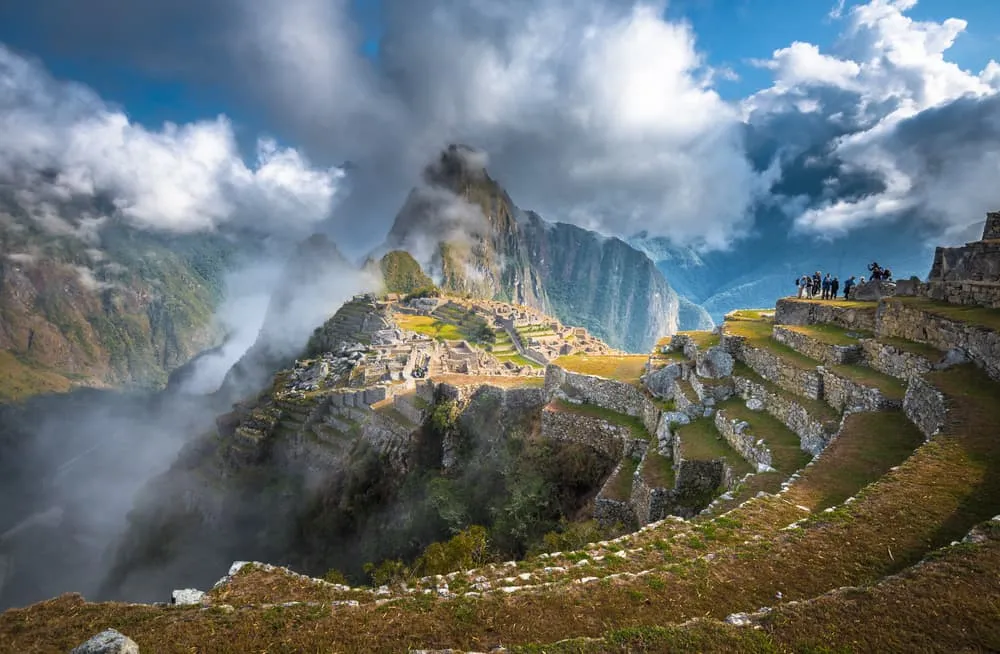
Is the Salkantay Trail for me?
The Salkantay Trek is a rewarding yet challenging adventure that requires a good level of fitness and some preparation for high-altitude trekking. With daily distances ranging from 12 to 20 kilometers (7 to 12 miles), and hiking hours that can last from 5 to 7 hours a day, this route is ideal for those in good physical condition. Along the way, you’ll encounter significant elevation changes, reaching altitudes of up to 4,650 meters (15,255 feet) at the Salkantay Pass. Acclimatization is key to comfortably handling high-altitude conditions, so consider spending a couple of days in Cusco or another high-altitude location before beginning the trek.
If you’re planning to take on the Salkantay trek, here are some important points we think you should keep in mind:
- Spend at least one extra day in Cusco to help you get used to the altitude.
- The second day of the Salkantay Trek is the hardest.
- Don’t rush. Enjoy.
- Once you’ve crossed the Salkantay Pass, it gets easier.
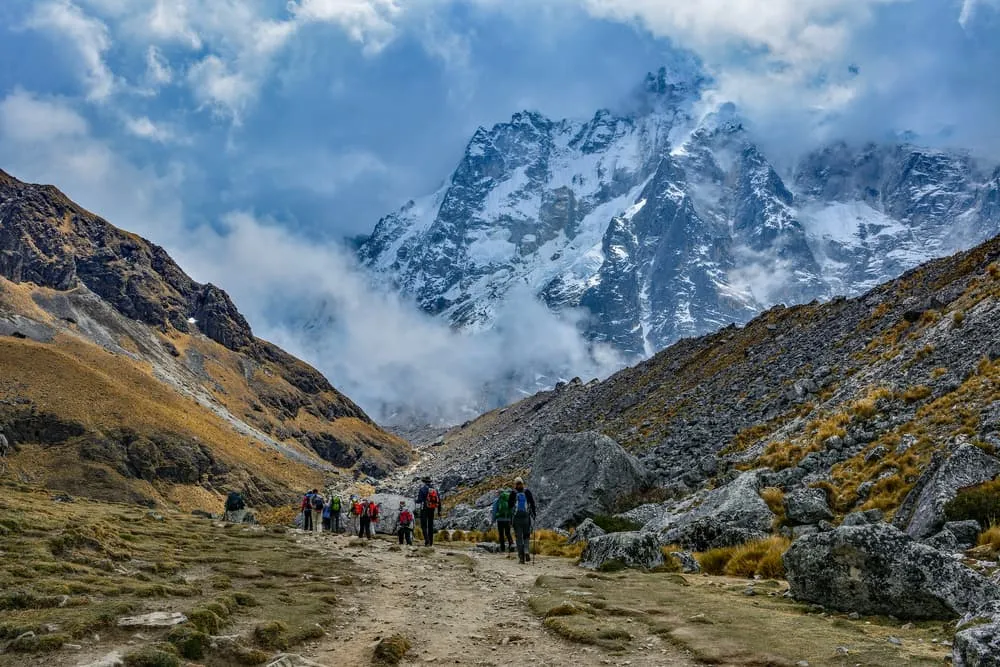
What is the best season to do the Salkantay Trek?
The best time to hike Machu Picchu is generally during the dry season, from April to October. This season offers stable weather, with sunny days and clear skies, ideal for trekking. But beware, this is also the busiest time, especially from June to August, so booking in advance is recommended. It is also important to remember that the weather in the region is always unpredictable, so you should be prepared for sudden changes and possible rain, no matter the season.
The rainy season runs from November to March and brings regular showers, making the roads muddy and more challenging. For those who want to avoid the crowds, this may be an option, but be prepared for rain and possibly lower visibility.
Machu Picchu itself is open year-round. However, the Inca Trail is closed in February for maintenance. While the Salkantay Trail is technically open year-round, it’s important to note that weather conditions during the wet season can affect trekking, and some operators choose not to offer the Salkantay Trek between January and March. Please check with our trekking experts before booking if you’re planning your Salkantay adventure during the rainy season.
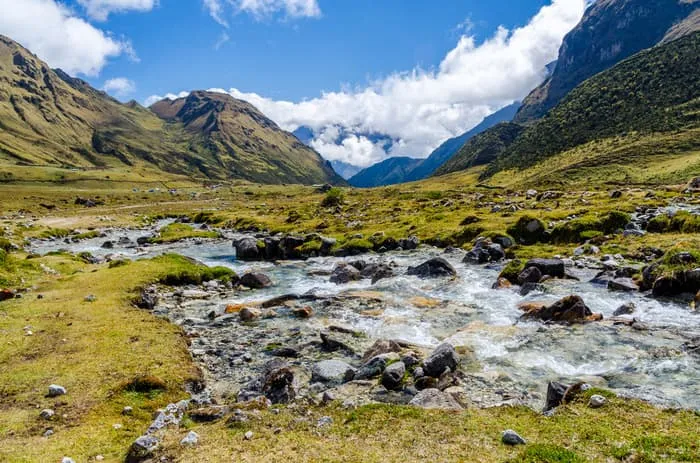
What are the different options for the Salkantay trek?
The Salkantay Trek offers several options, usually lasting 4 or 5 days. For those who want to acclimatize gradually and enjoy a more relaxed pace, the 5-day trek offers an extra day and some additional time at scenic stops. Most treks also include a short section of the classic Inca Trail towards the end, giving you a taste of the classic route to Machu Picchu. Here are some of our options for the Salkantay Trek:
What are the different options for the Salkantay Trek?
4-Day Classic Salkantay Trek: The 4-day trek is ideal for hikers who want to reach Machu Picchu at a faster pace without missing any of the highlights. This route takes you through stunning places like the Salkantay Pass and cloud forests, a great mix of high-altitude views and scenery. It’s a tough hike with long days, perfect for those with limited time who want to make the most of every step.
5-day Salkantay trek: The 5-day trek, on the other hand, offers a more relaxed pace, with extra time to acclimatize and enjoy the nature around you. This itinerary adds an extra day for special stops and cultural experiences along the way. You have more time to enjoy sights like glacial lakes and mountain passes, a great option for those who want a more complete experience before reaching Machu Picchu.
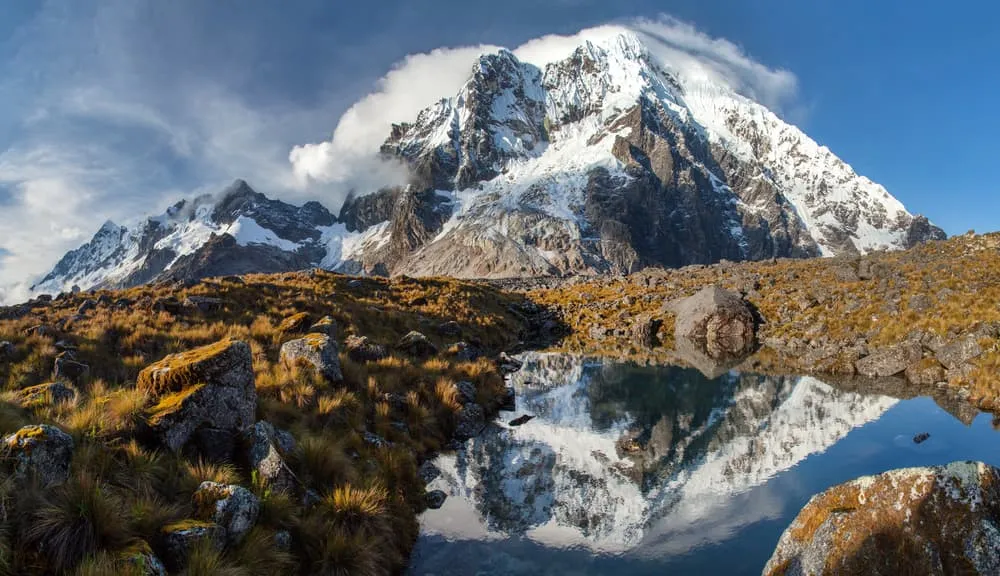
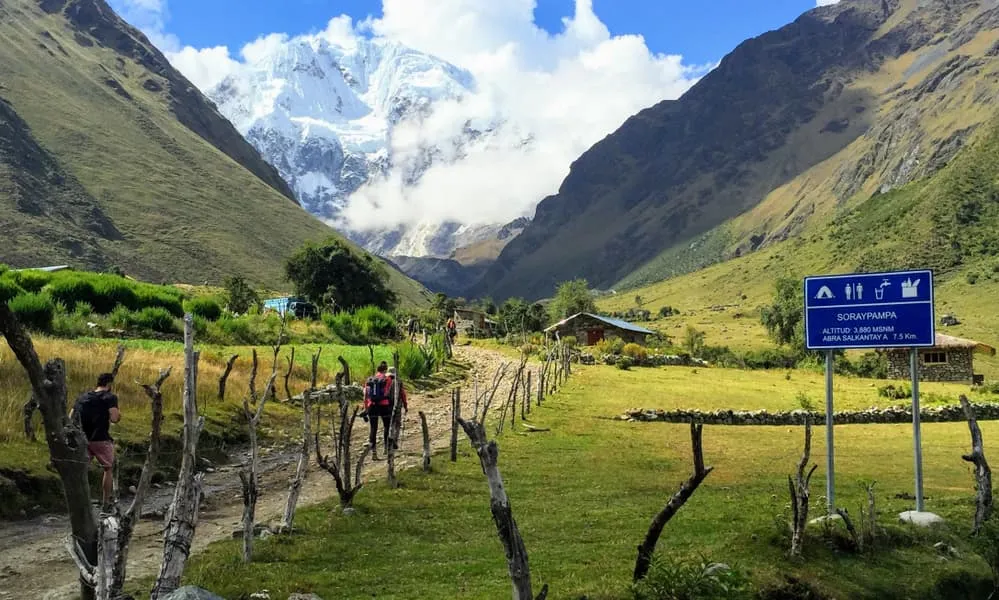
You can choose between group or private tours, depending on your preference for company and flexibility. Group tours are usually more affordable and ideal for those who enjoy meeting other hikers along the way, while private tours offer a more personalized, self-paced experience. Both options are usually guided by locals who will enrich your experience with insights into the culture, history, and landscape. There are also self-guided options available for the more adventurous, although the trekking terrain and high altitudes mean it is best suited to those with experience and who are comfortable walking alone.
5-day Salkantay trekking itinerary
If you are looking for an itinerary that covers everything there is to see and includes accommodation, guides and porters, you can opt for our 5-day Salkantay Trek.
ITINERARY
Day 1: Cusco – Soraypampa “Lodge del Cielo” campsite.
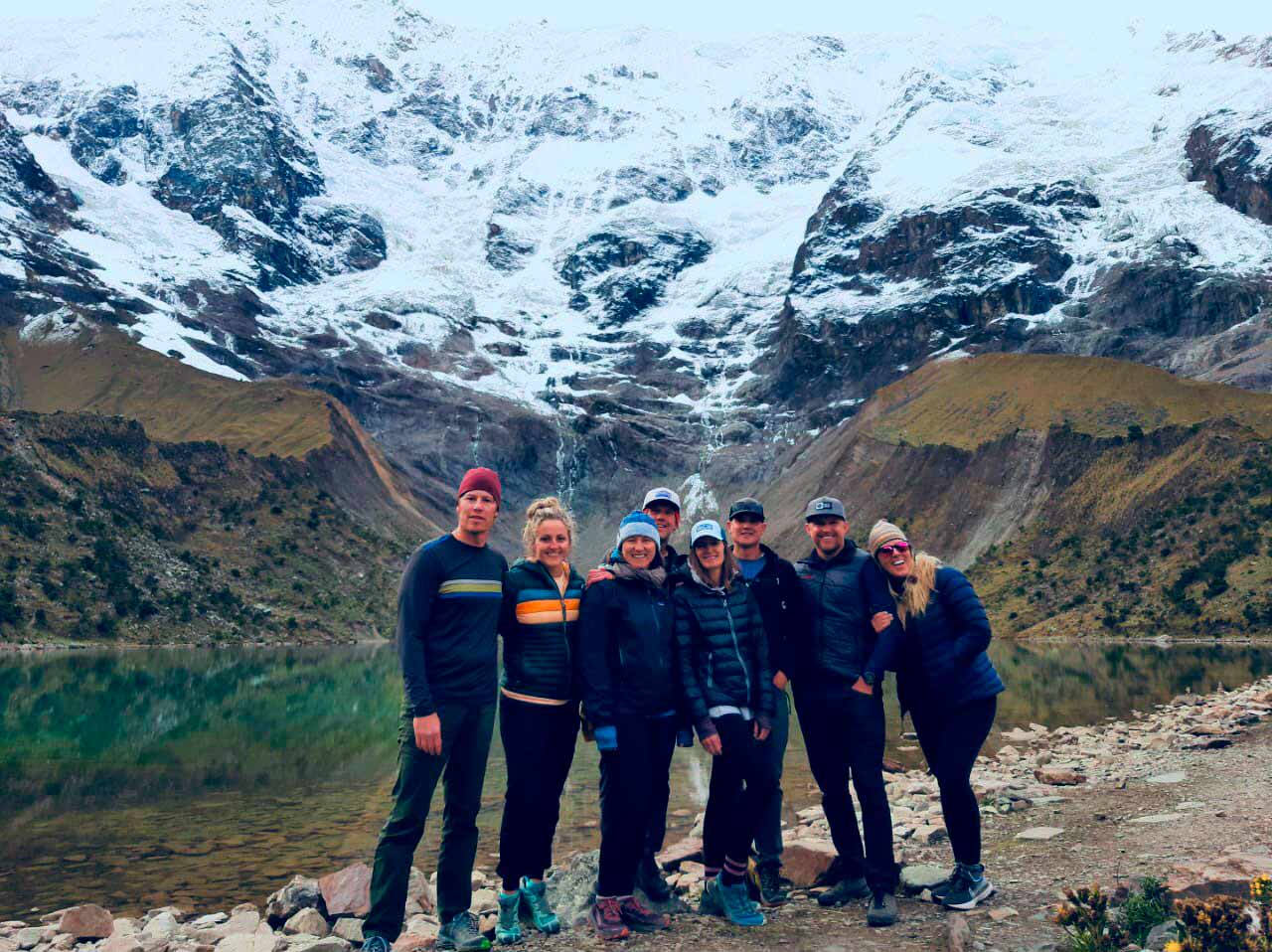
Walking Time: Approximately 6 hours (including a picnic lunch in the route)
Walk and Terrain: Walk, on open roads, some steep ascending trails
Highlights: Humantay Lake trek
“Smooth trekking day” Acclimatization day.
Overnight at Soraypampa Lodge del Cielo “Sky Lodge” at 3,869 masl/12,690 ft.
About Our Lodge del Cielo base in Soraypampa: Our camp is located at 10 minutes walking from the village of Soraypampa, this gives us a huge advantage to have a 360 panoramic view of the Humantay lake glacier, also it is a perfect place, away from the crowd and where we can appreciate the beautiful scenery of the Andean Valley and enjoy the company of our pretty Alpacas.
Note: On the evening before this day there will be a briefing with your guide in Cusco. After an early breakfast at your hotel, our pick up time can vary and will be confirm only on the day of your briefing your Cusco hotel by ITEP guide and vehicle “Pick up time can vary and will be confirmed only on the day of your briefing”.
Tarawasi: In our way we will visit the Tarawasi Archaeological center (approx. 1.5 hrs. from Cusco). The archeological complex of Tarawasi is located in the district of Limatambo, providence of Anta (Cusco region), to the left of the Limatambo river and 2675 masl.
This name comes from the union of two Quechua words “Inca Language”, which would be: «Tara» that means bush and the second one is «Wasi» that means home. The construction of this complex would may be constructed by Inka Pachacuteq during the epoch of his reign. Due to the structure of the archaeological complex indicated that was a ceremonial center that is located in the beginnings of Chinchaysuyo; also, there is a construction of a temple which would be found seated on the Ushnu. A ceremonial altar with a pyramidal shape that was used for important ceremonies and due to its location is indicated that this also served as a resting place in route to the Chinchaysuyo.
After leaving Tarawasi, we pass through the mountain village of Mollepata where we stop for a short break before ascending to Soraypampa.
Here in Soraypampa our first campsite is going to be” Lodge del Cielo”. After Lunch time, our excursion takes us to Humantay Lake, fed by glaciers far above on the slopes of the impressive Mt. Humantay. Our 4-hour walk is necessary in order to reach the lake, but the view is well worth and those brave enough, can go for a swim! Performed by our local Tour Guide, in full view of the awe-inspiring Mt. Salkantay, tops off this unique experience. Return to the Lodge.
Day 2: Crossing the Salkantay Pass “challenge day”
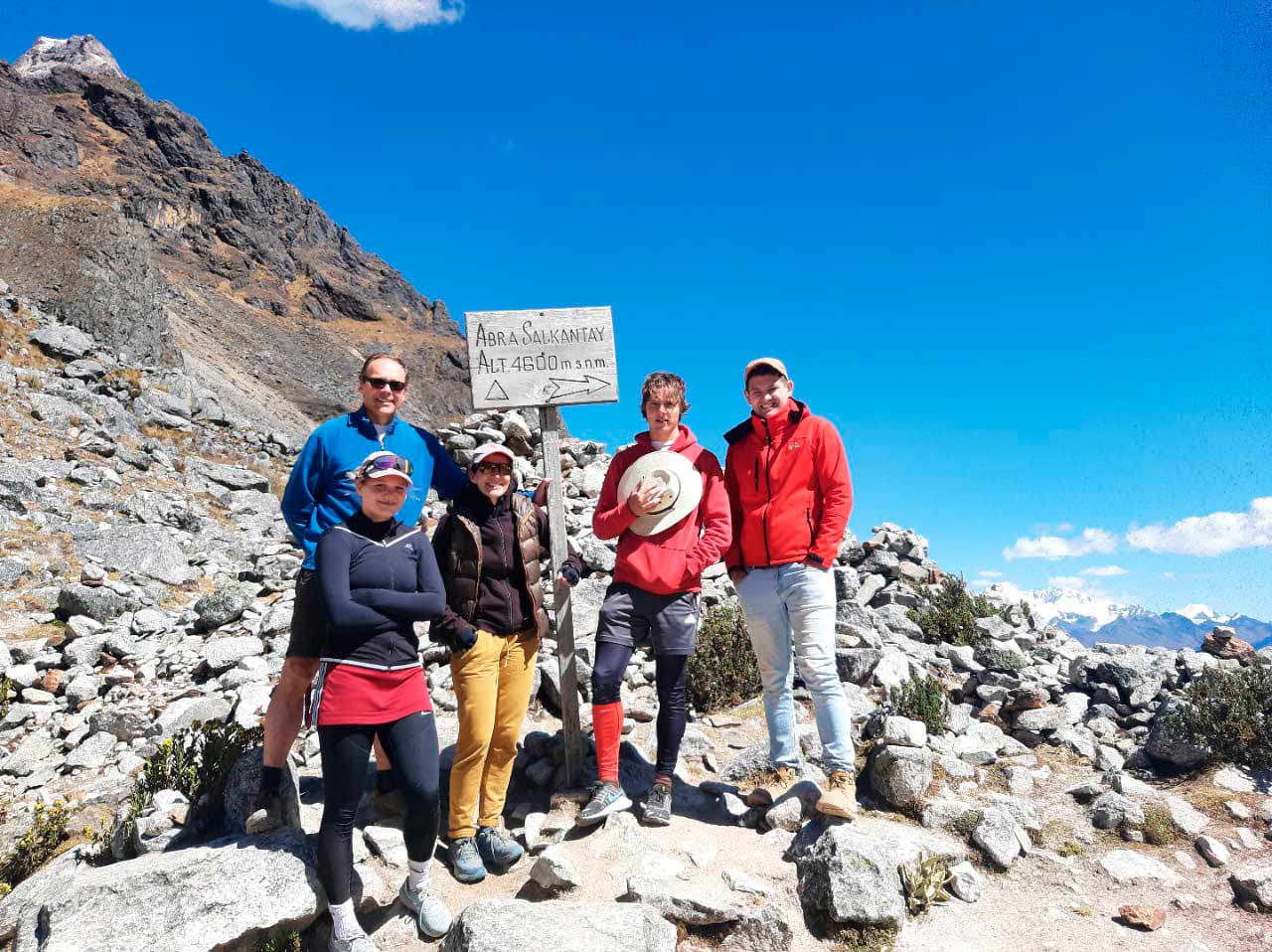
Walk and Terrain: Walk, on mostly steep trails, and some open slopes.
Overnight at Collpapampa camp site Sky Lodge at 2,870 masl/9,414 ft.
Today very early in the morning at 4:00 am we will wake up with a very hot wake up té, at 4:30 am after a nice breakfast and at around 5:00 am we will be starting our trek to climb the Salkantay Pass “we will take advantage to walk in a fresh early morning and before the sun comes out, the characteristic heat of the Andes.
We continue our journey towards Machu Picchu, walking up the Rio Blanco valley and circling Humantay Peak across Salkantay Peak. The highest point of the ride is the Salkantay Pass at 4,638 masl (15,213 ft). At the pass we stop to take a nice view of snow-capped peaks of the Vilcabamba Range in every direction, with the glaciated south face of Salkantay towering above us. We will keep our eyes out for Andean condors, often visible in this area. From the pass we descend towards the “Wayracmachay”: (‘the cave where the wind lives’) where we are going to enjoy a delicious lunch, later on we will continue 03 hours trek downhill until we reach our Campsite in the route dinner and overnight at the Sky Lodge.
Trekking Time: Approximately 12 hours (including picnic lunch in the route) our style is just walk slow, enjoy the scenery, and talk with our tour guide. A local man can make this trail in just 3 hours. But we are going to do it in 10 hours including the Lunch time.
A Little of History:
The name Salkantay or Salcantay is coming from the Inca´s word Salqa, a Quechua word meaning wild, uncivilized, savage, or invincible, and was recorded as early as 1583.The name is often translated as «Savage Mountain».
Directly to the north of Salkantay lies Machu Picchu, which is at the end of a ridge that extends down from this mountain. Viewed from Machu Picchu’s main sundial, the Southern Cross is above Salcantay’s summit when at its highest point in the sky during the rainy season. The Incas associated this alignment with concepts of rain and fertility, and considered Salkantay to be one of the principal deities controlling weather and fertility in the region west of Cusco.
About Our campsite “Lodge del Cielo” in Collpapampa: Our camp is located at 10 minutes walking from the village of Chaullay. Our Camp site in Collpapampa gives us a huge advantage to have a 360 panoramic view of the Salkantay Valley, also it is a perfect place, away from the crowd and where we can get to know the local families
Day 3: Descending into the Cloud Forest
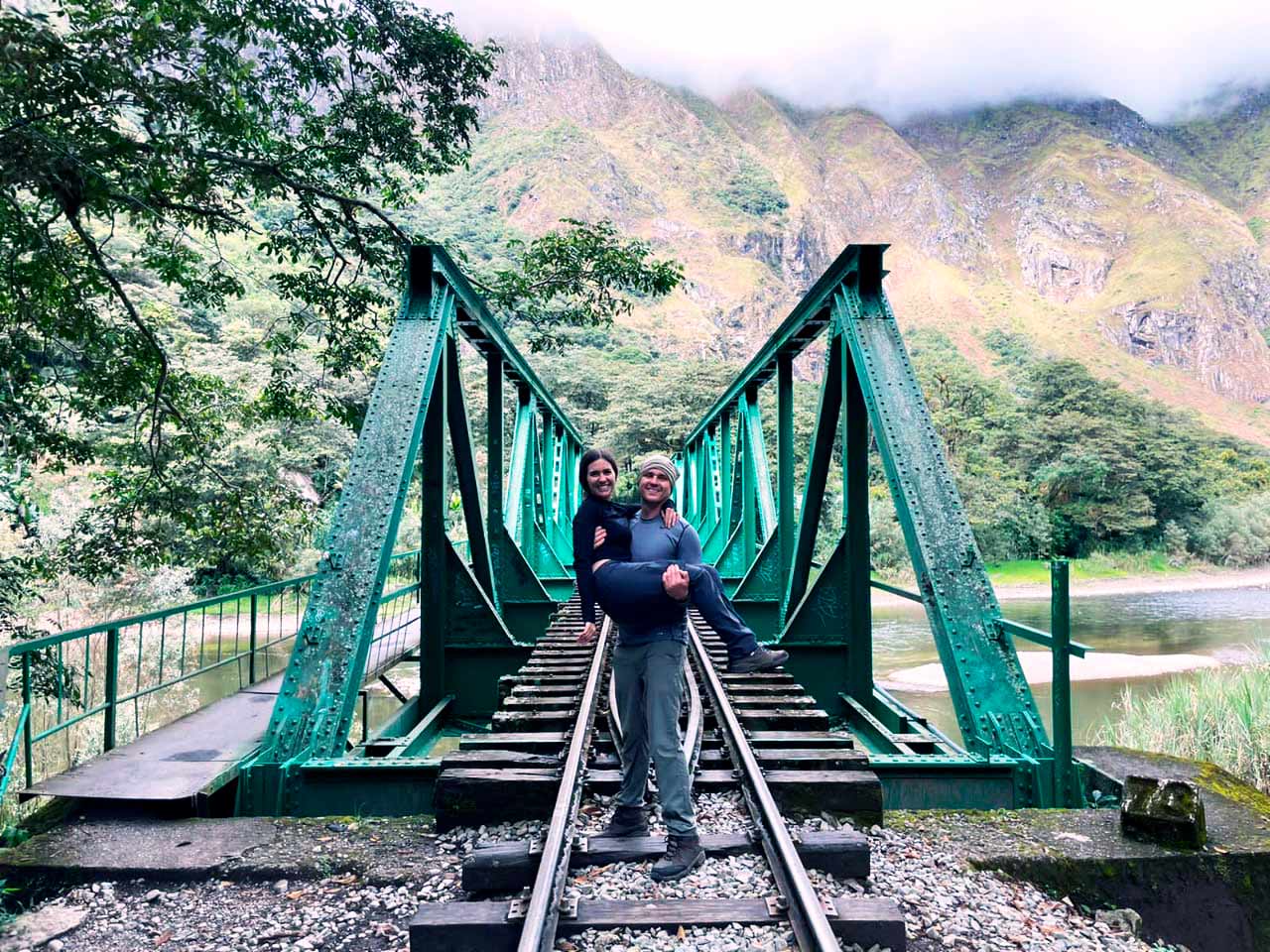
A short 30-minute walk through an avocado orchard brings us to our “Sky Lodge” in Lucmabamba. Dinner and overnight at our Sky lodge
Trekking Time: Approximately 5 hours
Walk and Terrain: Walk on narrow trails
Overnight at Lucmabamba Sky Lodge “Lodge del Cielo” at 2,062 masl/6,765 ft.
This day we walk along the Santa Teresa river valley, through more populated rural areas. We pass through banana, passion fruit, avocado orchards and coffee plantations. The coffee from this region is considered as the best organic coffees in the world.
Our ride will take us to fascinating place named “Llactapata Inca Trail”, where we say goodbye to our horses and equestrian staff.
About Our Lodge del Cielo base in Lucmabamba: Our camp is located at Lucmabamba, it is a perfect place, away from the crowed groups and where we be in touch with a local family.
At this time their economic activity is based in the Coffee plantations and is our responsibility to help them and also, we can learn a little bit more about the coffee.
Optional: If you request a Private Service, we can have a Local Coffee Experience
Responsible Tourist Development for the inka Community, «Heir of Machu Picchu»
The Coffee of the Inka´s
Peru is quickly building a global reputation for producing traditionally cultivated, shade grown, high quality coffee beans.
Coffee production came to Peru in the 1700s. After two centuries, the heirloom typical variety still comprises 60 percent of the country’s exports. There are more than 110,000 coffee growers in Peru, most of them are indigenous to these landscapes and speak Spanish as a second language.
The ‘Flor de Cafe’ (Coffee Flower) Rural Community Tourism Association from Lucmabamba – Bayona is located in the Inca Trail (Lucmabamba-Llactapata-Aobamba), with a final destination in Machupicchu, at a height of 2026 m. a.s.l it was a dream of 15 families.
These families found an opportunity to improve their quality of life through touristic activities, sharing their ancient knowledge inviting tourists to live the experience of flavors and knowledge of the Coffee Tour (Ruta del Cafe).
Day 4: Inca Trail by Llactapata “1st view Machupicchu”
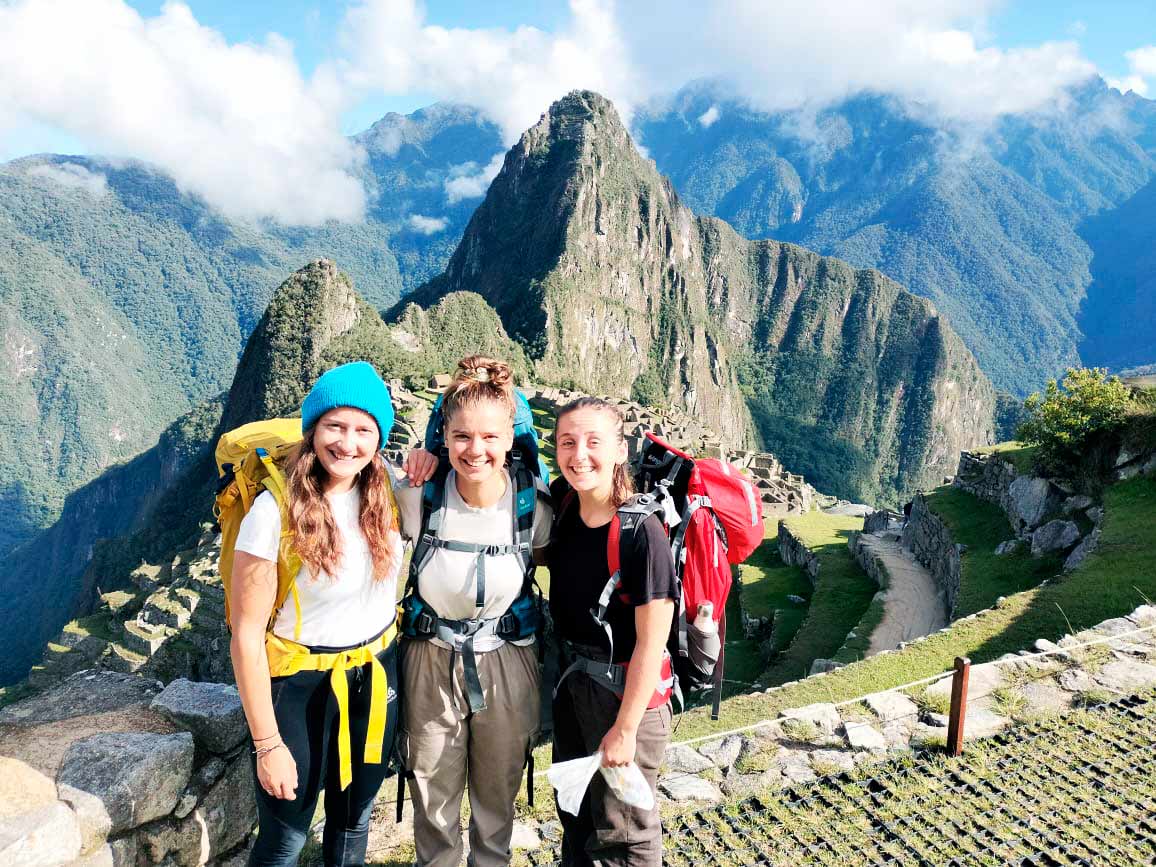
Overnight in Aguas Calientes at 1,900 masl/6,232 ft.
Hiking Time: 5–6 hours
Hiking Level: Moderate to challenging.
After a healthy breakfast, we tackle the last day of our trek. We head uphill for 2-3 hours towards Llactapata Pass (2,736 m.a.s.l/8,974ft), where we come upon a distant with an spectacular view of Machu Picchu Sanctuary, from the southeast view, few travelers ever get a chance to admire the magnificent of the place, we take a short break to explore Llactapata archaeological place, which had been recently restored.
Lunch is served at a scenic viewpoint, looking out to Machu Picchu. After we begin our final descent to the Aobamba River through lush bamboo forests, orchards and coffee plantations.
We arrive to Hydroelectric Village “Train station Village”, we continue our walk a side of the rail way until Aguas Calientes also known as Machupicchu Village (approx. 3 hours)
Upon arrival, we check into the hotel for a celebration dinner with our guide and one last briefing for our next day experience!
Note – Those who prefer not to hike from Hydroelectric Village to Aguas Calientes can take the train experience, 40 minutes’ trip “price is not included”. They will meet the rest of the group at the train station in Aguas Calientes together. (The guide confirms your preferences the night before.)
About Our overnight in Machupicchu Village: Hotel in Aguas Calientes will vary according your request and expectations.
A LITTLE OF HISTORY:
Bingham first discovered Llactapata in 1912. «We found evidence that some Inca chieftain had built his home here and had included in the plan ten or a dozen buildings. Bingham locates the site «on top of a ridge between the valleys of the Aobamba and the Salcantay, about 5,000 feet above the estate of Huaquina.» «Here we discovered a number of ruins and two or three modern huts. The Indians said that the place was called Llactapata.» Bingham did not investigate the ruins thoroughly so they were not studied again for another 70 years.
A mid-2003 study of the site conducted by Hugh Thomson and Gary Ziegler concluded that the location of Llactapata along the Inca trail suggested that it was an important rest stop and roadside shrine on the journey to Machu Picchu. This and subsequent investigations have revealed an extensive complex of structures and features related to and connected with Machu Picchu by a continuation of the Inca Trail leading onward into the Vilcabamba. Llactapata may have been a member of the network of interrelated administrative and ceremonial sites which supported the regional center at Machu Picchu. It probably played an important astronomical function during the solstices and equinoxes.
Day 5: Visiting Machu Picchu Sanctuary
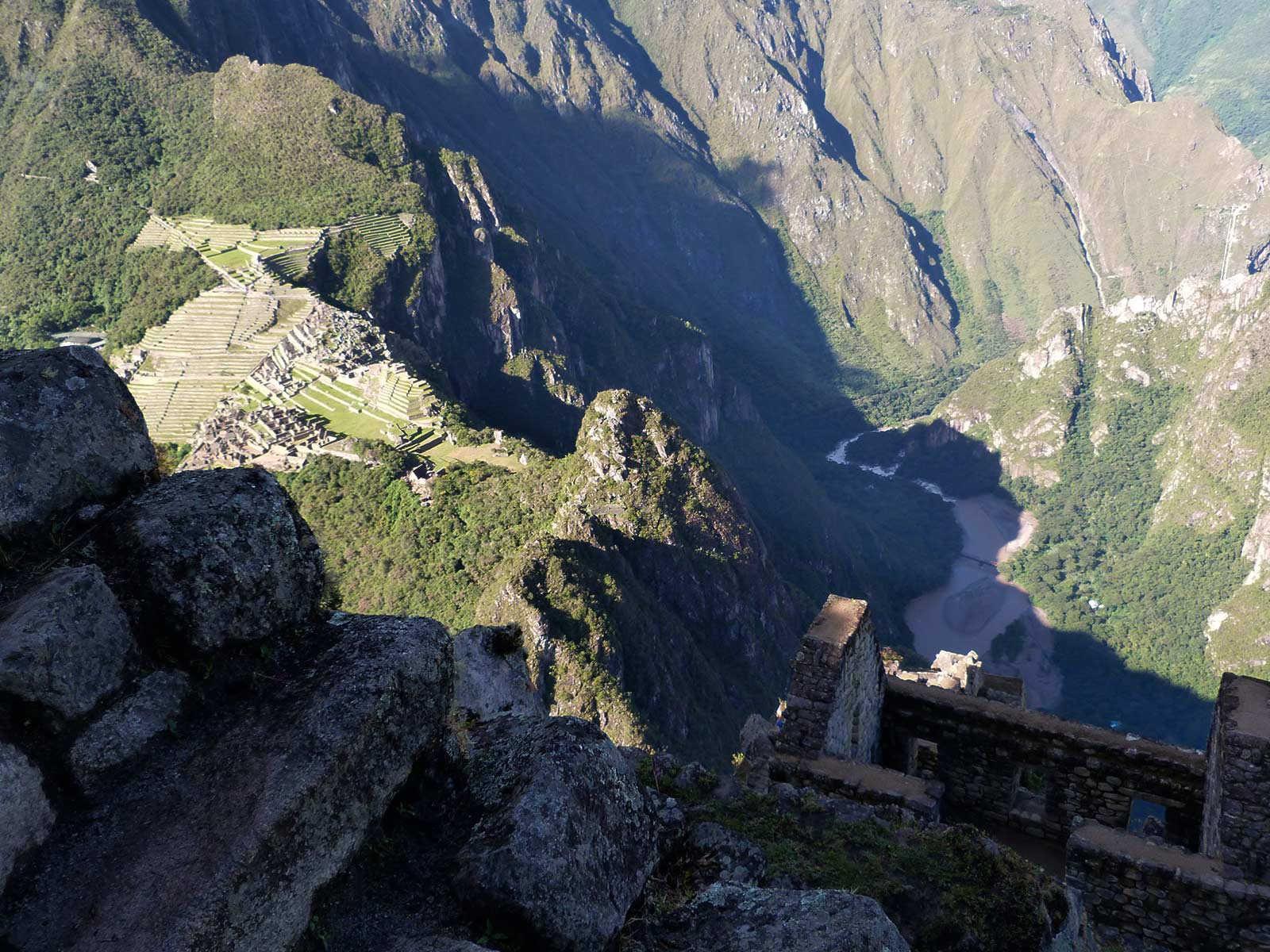
Returning to Cusco: 3,360 masl/11,021 ft.
Meals: Breakfast
Distance: 6 km/3.7mls
Difficulty: Easy
After a very early buffet breakfast at your hotel, we make our way to the bus station for the ride up to Machu Picchu Sanctuary (30 min). Our trip leader will give an introductory guided tour of the Inca city.
Machu Picchu Guided Tour: Machu Picchu Inca City opens at 6 am. We are going to be in the Inka City between 6 am and 7 am, after we show our entrance ticket , we will climb the best point to take some pictures in the “The Guardian House”, after a 30 minutes free time at your own discretion, your guide will give you information about the Inka City for around 1 hour.
After the guardian House Guided explanation, you are going to have 02 options.
1. – After the explanation of your Tour Guide from the Guardian´s House. – You can choose to climb the Sun gate. A trek up around one hour, a really great option to get the best panoramic pictures of all the Andes and the fascinating MACHUPICCHU. Those who make the Inca trail will arrive trough the Sun Gate later on; you can come back to the Inca city and Visit by your own the Inka City.
2. – After the interpretation of your Tour Guide from the Guardian´s House. – We continue into the Inca city by another 1 hour, passing the main plaza, the temple of 03 windows and much more, once we arrive to the Sacred Rock “very close to the entrance gate for Huayna Picchu Sacred Mountain”, our tour guide will give you some free time in order to explore the Inca city at your own. Climb up Huayna Picchu or Machu Picchu Mountain (not included in the price, spaces are limited, please let us know)
Very Important 1: According Machu Picchu regulation, once you enter to the sacred City is not allow to get back by the same paths is just one way tour “there are a lot of signs about which route we should follow, and is forbidden to stop in some places”, For that reason we advise you to enjoy every minute you will be in each Inca place.
Very Important 2: According Machu Picchu Regulation, entrance fees are only one time, it means once you go out from the Inka City, you can’t return, unless you get a new ticket.
Back to Cusco: You will descend to Aguas Calientes by bus (included) and later board the Expedition train by 4:22pm (it depends of the train availabilities) to the Ollantaytambo Train Station where you will meet our private van and be transferred to Cusco arriving around 8:30pm.
Returning to Cusco: 3,360 masl/11,021 ft.
Additional: Climb Huayna Picchu or Machu Picchu Mountain
Once in Machu Picchu, you will have the opportunity to explore the mystical citadel on a guided tour with a local guide who will explain the history and architecture of this wonder of the world. Want to make your experience even more special? Then choose to climb Huayna Picchu or Machu Picchu before returning to Cusco.
Huayna Picchu is the most popular option, a steep and exciting climb that will take you to spectacular views of the citadel in 1-2 hours. This mountain is perfect for those who like a challenge and are not afraid of heights! Machu Picchu Mountain is a little less steep and calmer, but offers a wider view of all the ruins and the surrounding valley. This climb takes around 2-3 hours and gives you plenty of time to enjoy the views. Both options require a special permit, so booking in advance is essential to secure your spot. Also, keep in mind that this additional permit is usually not included in the price of the trek and costs extra. If any of these mountains are on your bucket list, let us know and we can secure permits so your Machu Picchu adventure includes everything you hoped for!
A picturesque return trip from Machu Picchu to Cusco.
After your guided group tour of Machu Picchu, you will enjoy a wonderful return trip, starting with a bus back to Aguas Calientes and then a 2-hour train ride to Ollantaytambo. For those who want to immerse themselves in the beauty of the Andes with a touch of luxury, the Vistadome or 360º panoramic train offers stunning views of the landscapes through its large windows. This experience invites you to connect with the wonders of this sacred land through local music, traditional dances, and even an alpaca fashion show on board.
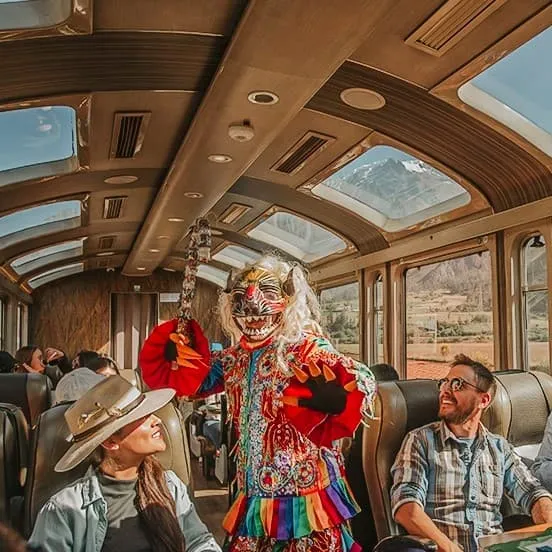
Salkantay Trekking, Packing List
If you are planning to go on a guided tour in Peru, you have made the right choice. Everyone knows that when you go hiking alone, you end up packing way too much stuff into your backpack. And surprise! No one is going to carry that weight for you. Not when you book your trek with us. All our treks include porters who will take care of (almost) everything for you: from food and tents to sleeping bags, mats and much more. If this sounds like you, here is a detailed list of what you will need on Trekking Salkantay:
- Essentials
- For your everyday backpack
- Additional items for your travel bag
How to recognize and prevent altitude sickness
When you’re hiking in the stunning mountains of Peru, altitude becomes part of the adventure. Altitude sickness (AMS) can affect anyone and occurs when your body needs time to adjust to the lower oxygen levels at high altitudes. Symptoms such as headaches, nausea and fatigue can set in quickly, but are manageable with proper care.
With our experienced guides and porters, you’re in good hands. They’re fully trained in first aid and mountain safety, carrying oxygen, first aid kits and satellite phones to keep you comfortable and help you acclimatise smoothly. So you can focus on enjoying the trip. Here are some tips to help you stay comfortable and reduce your risk of AMS:
- Take it easy and slow
- Stay hydrated
- Eat a balanced diet
- Talk to your doctor if you’re considering medication
- Get as much rest as you need
- Don’t overdo it – listen to your body
- Move to lower altitudes if symptoms persist
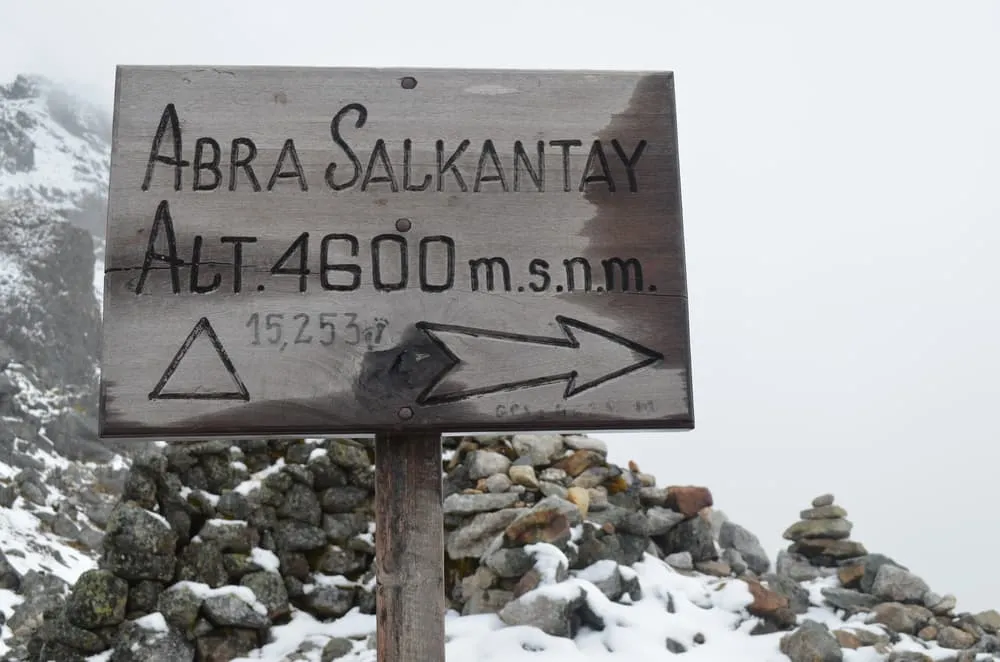
Salkantay Trekking, where to book?
At iteptravel.com you can book this route and many others. Our guided options are supported by experts so you can explore nature in a comfortable, stress-free, safe and educational way. Find our offers here. Our intuitive platform allows you to explore and compare different hiking options and find the one that best suits your interests, abilities and budget.
If you have any questions about a specific route or need help choosing the right one for you, our team of trekking experts are here to help. Just get in touch with us and we’ll be happy to give you personalized recommendations and advice to help you plan the best hiking adventure of your life.
